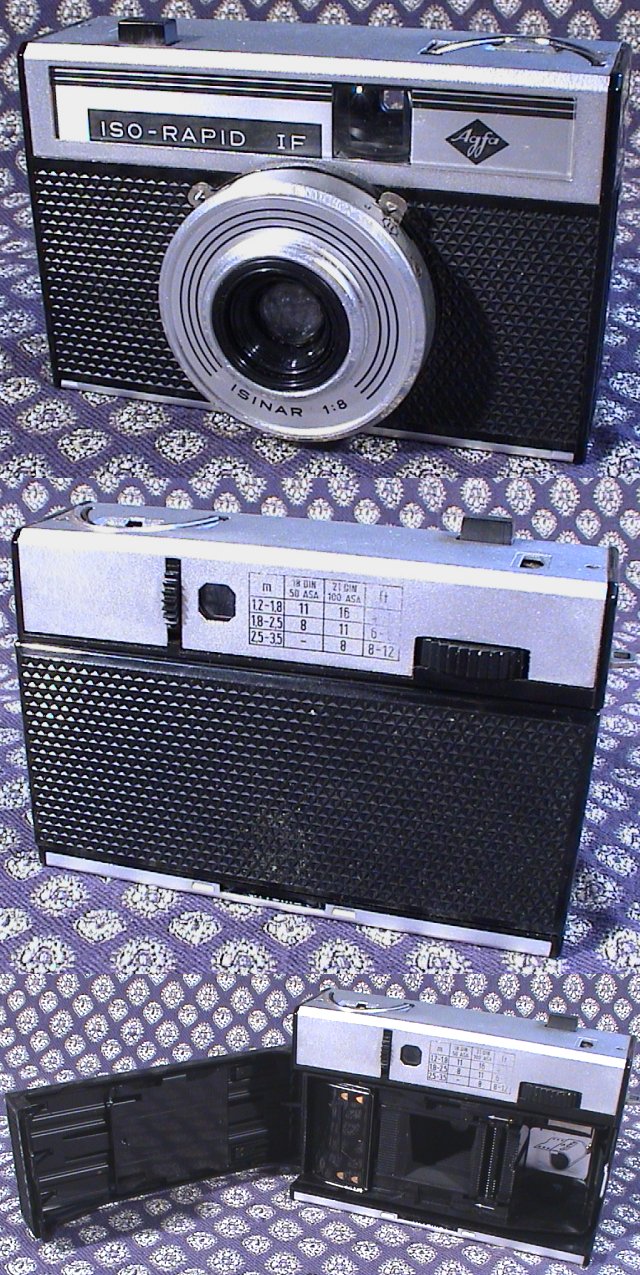
In 1964 Agfa introduced its Rapid system to compete with Kodak's new 126 format. It was a modification of the Karat system developed by Agfa in 1937, in turn derived from the Ansco Memo system. The Rapid system used standard 35 mm film, but packaged it in special cassettes that do not require the film to be rewind into the feed cassette. Agfa produced a complete range of Rapid cameras from 1964 to 1971, from very basic snapshot models such as the Iso-flash Rapid to the high-end Optima Rapid 500V, which featured a Solinar lens, meter, hot shoe, and shutter speeds to 1/500 second. The majority of Agfa's models gave 24 x 24 mm images, but a few, such as the Silette Rapid series, gave "standard" 24 x 36 mm images.
Drop-in loading and the elimination of rewinding at the end of each roll were the main advantages of the Rapid system. The film was sold in only one length (about 24 in.), which gave 16 exposures in 24 x 24 mm cameras and 12 exposures in the 24 x 36 mm cameras. The film was available in colour print, black-and-white, and slide emulsions. The more sophisticated Rapid cameras had small sensors in the film chamber which were engaged by tabs on the cassettes to set the exposure mechanism to the speed of the film. Several other manufacturers developed and marketed their own Rapid-format cameras in the mid-1960s; a few, such as Olympus and Canon, offered half-frame models, which gave 24 18 x 24 mm images per roll.
Unfortunately, the Rapid system was not the great success the company hoped for, and, bowing to the competition, Agfa brought its own 126 cameras to the market in 1967. Nonetheless, Rapid film was still available in the late 1980s, and the cameras are easy to find on the used market.
Agfa ISO Rapid IF was introduced in 1965. The camera below is the camera that fuelled my interest in photography. I liked the Rapid cassette, so much simpler than the standard 35mm cartridge from Kodak.

Very simple controls and a pop up flash bulb shield. The 24x24mm were printed 3.5" square with little borders.

